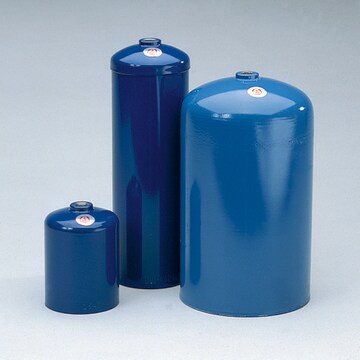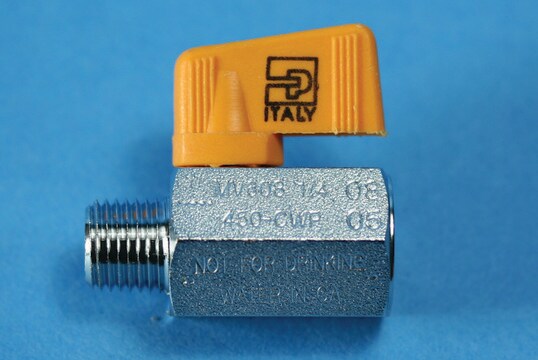257222
Trimethylaluminum
97%
Sinónimos:
TMA
About This Item
Productos recomendados
vapor pressure
69.3 mmHg ( 60 °C)
Quality Level
description
heat of vaporization: ~41.9 kJ/mol (dimer)
assay
97%
form
liquid
reaction suitability
core: aluminum
bp
125-126 °C (lit.)
127 °C/760 mmHg
20 °C/8 mmHg
56 °C/50 mmHg
mp
15 °C (lit.)
density
0.752 g/mL at 25 °C (lit.)
SMILES string
C[Al](C)C
InChI
1S/3CH3.Al/h3*1H3;
InChI key
JLTRXTDYQLMHGR-UHFFFAOYSA-N
¿Está buscando productos similares? Visita Guía de comparación de productos
General description
Application
- As a growth initiator to synthesize self-assembled aluminum nanoparticles via atomic layer deposition.
- As a precursor to synthesize aluminum-doped ZnO thin films(AZO) for electron transport layer of perovskite solar cells. TMA enhances electrical conductivity and thermal stability of perovskite layers.
- To fabricate Al2O3-coated Si-alloy anodes for Li-ion batteries. This coating helps to suppress the volume expansion of Si and improves cell stability.
- To fabricate Al2O3-coated graphite electrode with superior anti-self-discharging behavior (260 h) with long stability (900 cycles), for Al-ion battery.
Packaging
Compatible with the following:
- Aldrich® Sure/Pac™ station for liquefied gases Z566446
- PTFE Sealing tape Z104388 or Z221880
- Straight septum-inlet adapter Z118141 with septa Z565687 or Z565695
Other Notes
Legal Information
Optional
also commonly purchased with this product
septum inlet adapter
signalword
Danger
hcodes
Hazard Classifications
Eye Dam. 1 - Pyr. Liq. 1 - Skin Corr. 1B - Water-react 1
supp_hazards
Storage Class
4.2 - Pyrophoric and self-heating hazardous materials
wgk_germany
nwg
flash_point_f
No data available
flash_point_c
No data available
ppe
Faceshields, Gloves, Goggles, type ABEK (EN14387) respirator filter
Elija entre una de las versiones más recientes:
¿Ya tiene este producto?
Encuentre la documentación para los productos que ha comprado recientemente en la Biblioteca de documentos.
Los clientes también vieron
Artículos
In recent years considerable interest in ALD has emerged, mainly due to its ability to controllably coat even very small structures, e.g. nanoor microstructures.
Since the demonstration of the first practical solar cell 60 years ago, research on novel materials, improved solar cell design and structure, and innovative manufacturing processes have all contributed to a continuous increase in the efficiency of photovoltaic (PV) devices.
The properties of many devices are limited by the intrinsic properties of the materials that compose them.
Nanomaterials are considered a route to the innovations required for large-scale implementation of renewable energy technologies in society to make our life sustainable.
Nuestro equipo de científicos tiene experiencia en todas las áreas de investigación: Ciencias de la vida, Ciencia de los materiales, Síntesis química, Cromatografía, Analítica y muchas otras.
Póngase en contacto con el Servicio técnico








